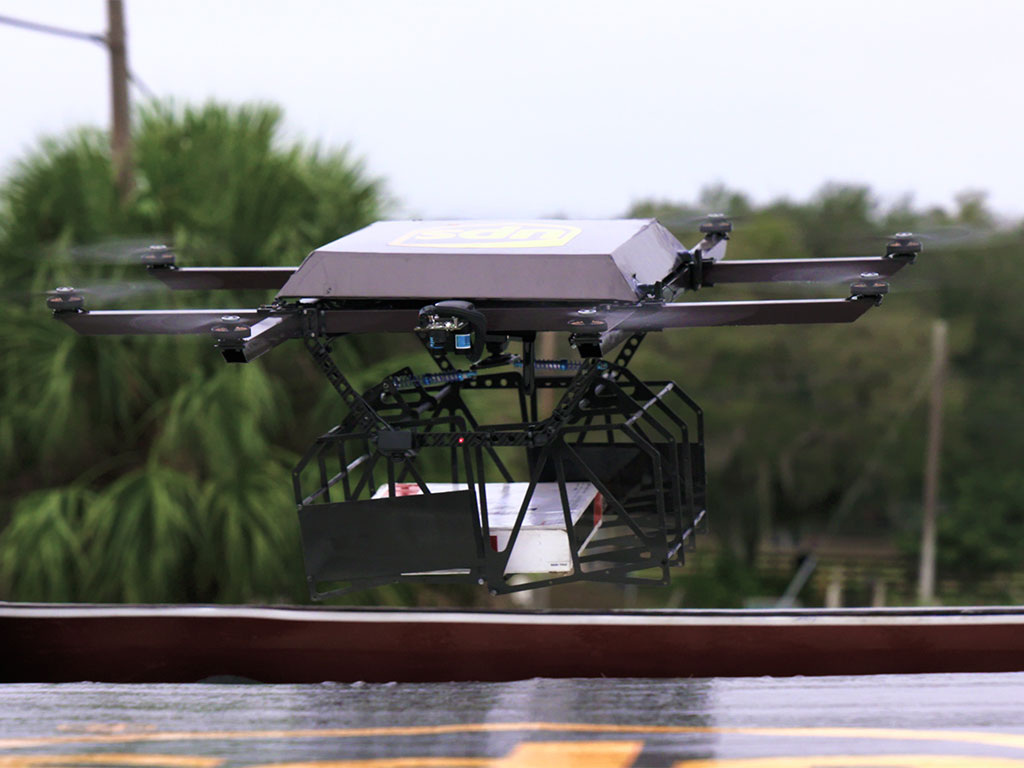UPS debuts drone-launching truck
In a vastly different approach to competitors, UPS is looking at how drones can support its drivers instead of replacing them

The UPS delivery drone, launched from an otherwise-normal van, succeeded in its first delivery, but failed on the second attempt
The race to bring drone delivery to the masses has a new entrant, with UPS completing its first aerial delivery via drone. The company’s use of drones, however, is quite different to its competitors, including Amazon, with the machines designed to support drivers instead of replacing them.
The company’s first drone-assisted delivery took place in Tampa, Florida. The delivery system the company has developed involves a drone launching directly from a specially outfitted delivery truck. The drone is loaded by the driver and launched out of a retractable panel in the roof. After it completes the delivery, the drone returns to the hatch on top of the delivery truck. UPS claims that the drones have a flight time of approximately 30 minutes, and can carry up to 10lb.
UPS’ vision of drone delivery seems closer to reality than Amazon’s
This method represents a substantially different approach to drone delivery compared to what other businesses have trialled. Amazon has experimented with drone delivery in the UK with a system that has drones launching directly from a warehouse, completely removing humans from the delivery process. UPS’ version keeps its delivery drivers, with the system likely to be particularly useful for drivers on long rounds in rural areas.
With the current range and flight-time of drones, UPS’ vision of drone delivery seems closer to reality than Amazon’s. Most people simply do not live close enough to a dispatch warehouse for the latter’s system to make sense.
If implemented, UPS claimed that it stands to make substantial savings on its distribution costs. As reported by The Verge, the company estimates that if every one of its drivers could cut a single mile from their daily distance driven, it could save up to $50m per year.
However, the technology still has a long way to go before drones are regularly ferrying packages to customers. TechCrunch reported that the drone failed on its second delivery attempt, and current regulations in the US require drones to be within sight of their operators at all times.













